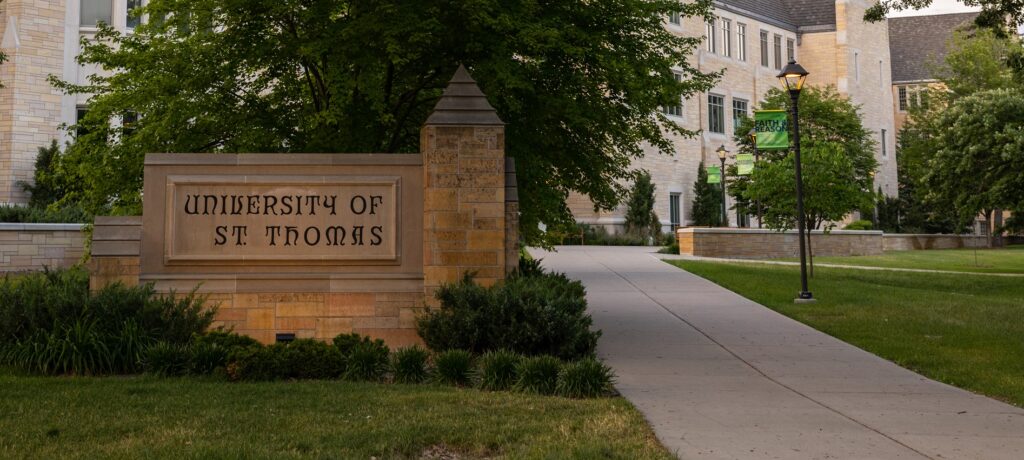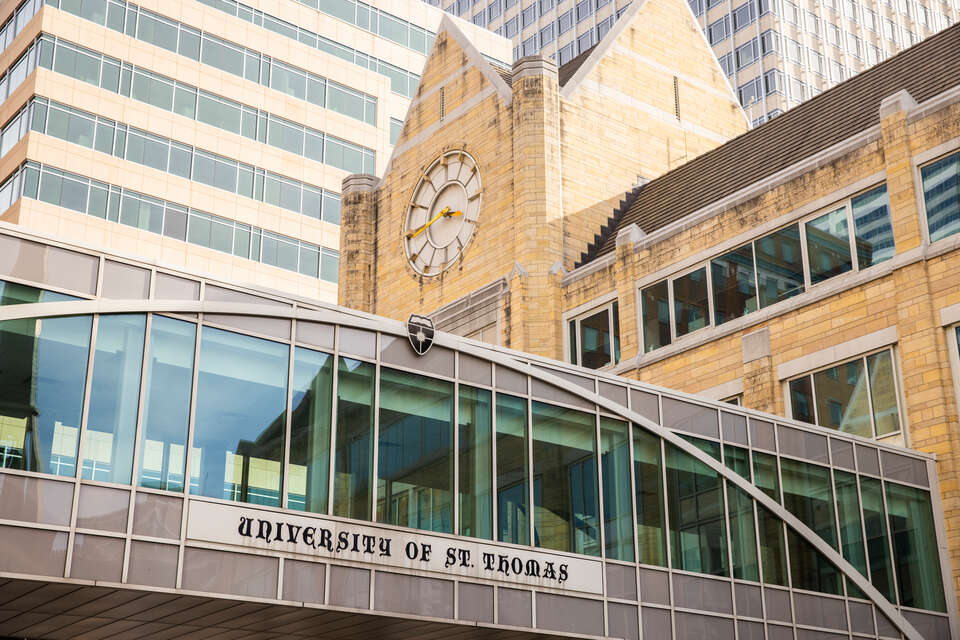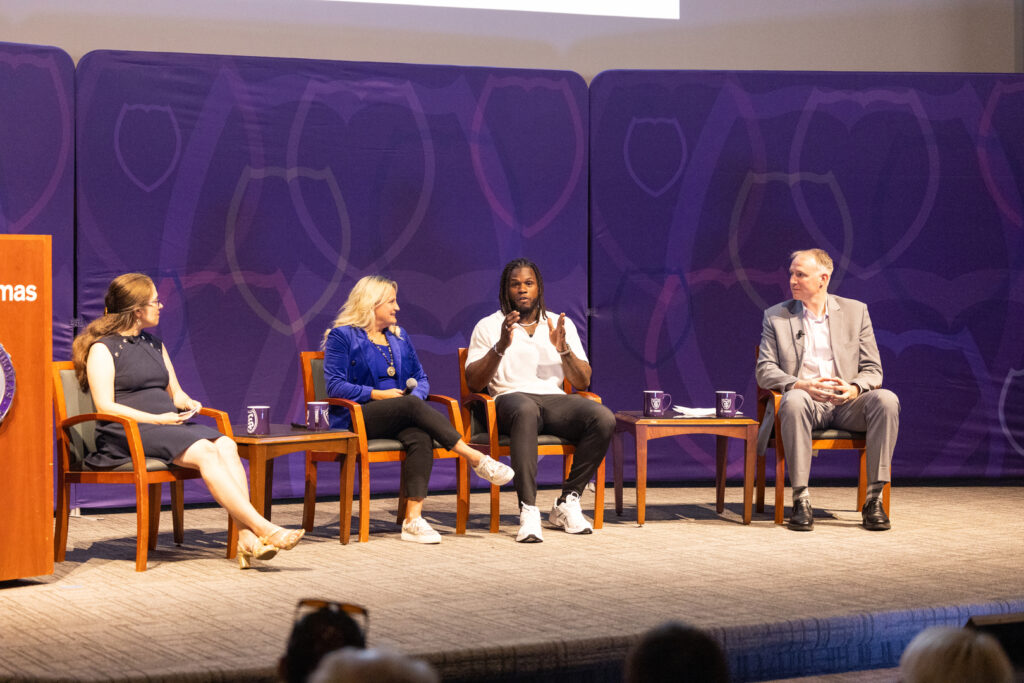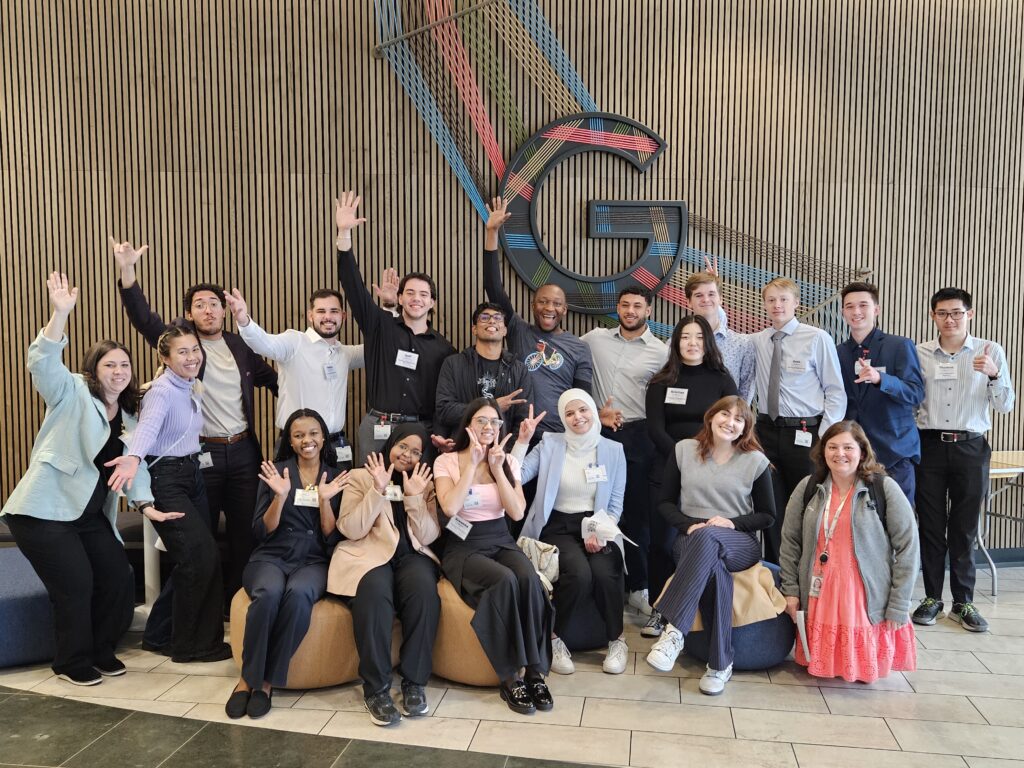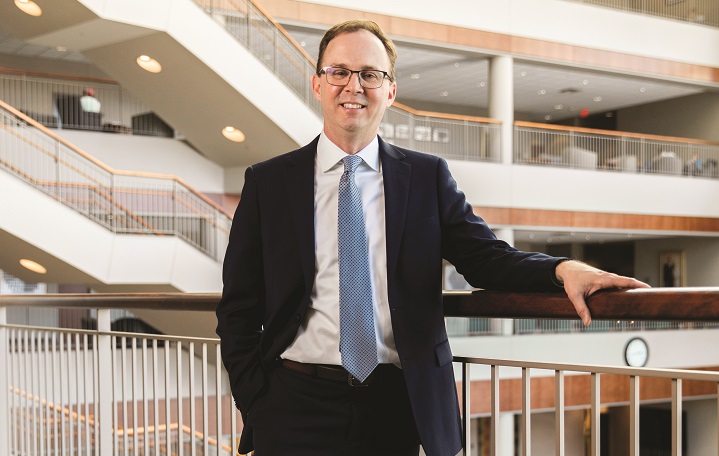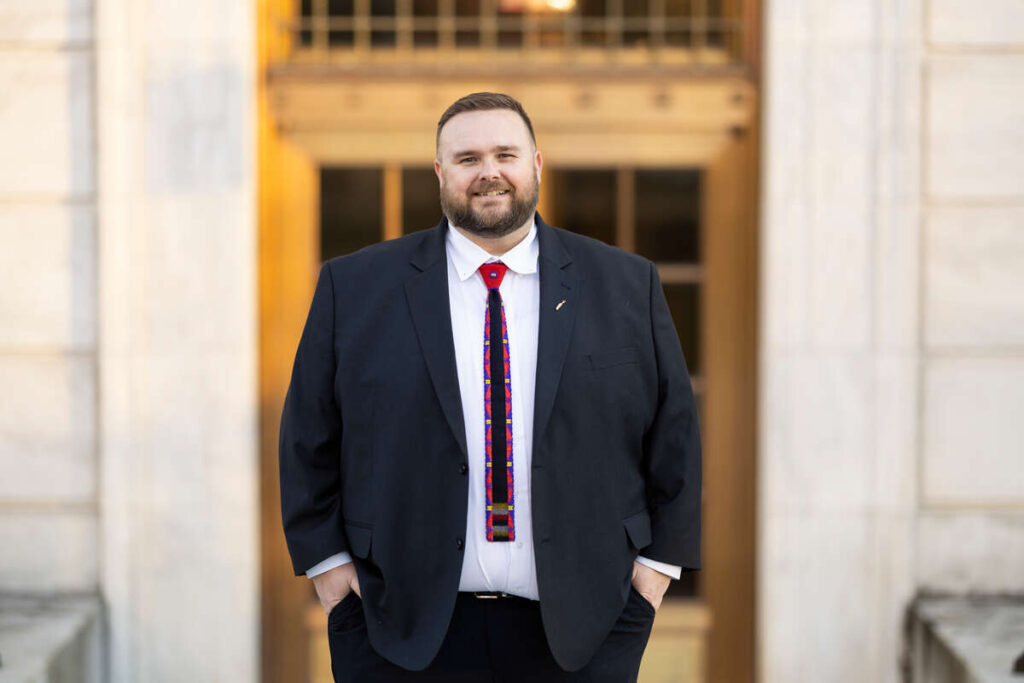The lower quadrangle on the St. Paul campus may look like a little kid’s big sandbox today, but work remains on schedule to transform one of the University of St. Thomas’ most popular outdoor spaces into a larger and more beautiful area by the beginning of the fall semester.
The project is related to the construction of the Anderson Student Center and the Anderson Recreation and Athletic Complex and involves lengthening the quadrangle to the west. Because of the new door locations to the new buildings, all sidewalks will be replaced; in addition, a storm-water retention system will be installed, trees will be removed and replanted, and irrigation system heads, water pipes and light and electrical conducts will be moved.
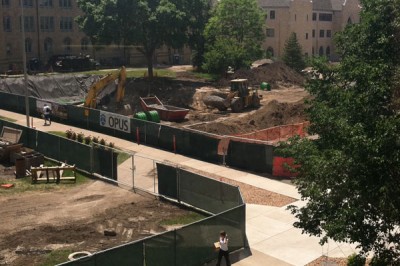
Crews will be busy in St. Thomas' lower quad through much of the summer.
“We knew we had a once-in-a-lifetime opportunity to design a bigger and more pedestrian-friendly quadrangle,” said Mark Vangsgard, vice president for business affairs and chief financial officer. “We’re excited about the new look for the quadrangle – and how it will create an even stronger sense of community as it ties together the new and the old.”
New sidewalks also will be installed between the student center, Aquinas Hall and Summit Avenue to streamline pedestrian traffic routes, and there will be new landscaping on the Summit side of Aquinas and the student center.
Damon Farber Associates, a Minneapolis landscape architect company, designed the new quadrangle in collaboration with St. Thomas and Opus Design Build, the Minnetonka-based contractor and architect for the student center.
In the quadrangle
Quadrangle design features include park-like landscaping and a symmetrical sidewalk design linking the traditional east and west portions of the quadrangle and the plaza outside the new student center to ensure pedestrians can move quickly and easily to their destinations.
One of the biggest components of the project is the construction of the storm water retention system for rain coming off the roof of the Anderson Athletic and Recreation Complex. Opus crews have dug a large hole west of the north-south double sidewalk that runs from the Arches to the upper quadrangle, and will fill the hole with layers of rock, gravel and sand to filter and diffuse AARC water before it seeps into the groundwater. The system will be topped off by soil and grass.
Work on the system will be completed by the end of June, said Jim Brummer, construction manager with the St. Thomas Physical Plant. Sidewalk installation west of the north-south sidewalk will be completed by the end of July and landscape and irrigation work will be finished by mid-August. The goal is to remove the construction fence around Aug. 26.
(You can watch the work in progress by clicking on the Quad Cam.)
The quadrangle section east of the north-south sidewalk will be completed earlier – sidewalks by July 8, landscape and irrigation by July 22, and construction fence removal in mid-August, Brummer said.
Forty-nine trees have been removed in total: 15 from the traditional quadrangle, 28 from the student center construction area, and six from the area south of Aquinas and Roach. A total of 108 trees will be planted as replacements. Trees were removed because of the filtration system and the new sidewalks or because they were diseased, dying or in poor condition.
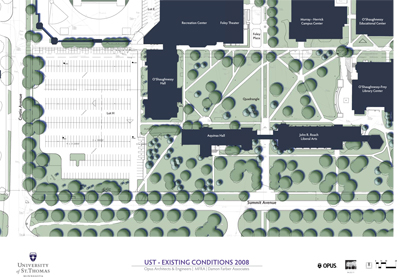
Here is the site plan of the lower quadrangle before the demolition of Schoenecker Arena, Foley Theater and Coughlan Field House in 2009 and O’Shaughnessy Hall in 2010.
“It makes sense to remove these trees today, when we are renovating the quadrangle, rather than to have to go back in there and remove them in one or two years,” Vangsgard said. “That was the case with one large ash tree on the east side of the quadrangle. We consulted an arborist and followed his recommendations on removing the fewest number of trees as possible and pruning and treating other trees in order to save them.
"That said, we are still at risk because there are a number of ash trees that will remain in the quad and we have been told it may only be a matter of time before the emerald ash borer kills them."
Summit Avenue changes
There also will be changes in pedestrian routes, sidewalks and landscaping on the south side of the student center and Aquinas Hall as people move to and from the south campus, McNeely Hall and the Summit Avenue Classroom Building.
One primary route will be a diagonal sidewalk from the student center to the northeast corner of Summit and Cretin. Opus constructed larger concrete standing areas last summer at the four corners of that intersection as well as wider Summit median sidewalks that parallel both sides of Cretin.
Another primary route will be a diagonal sidewalk from the area between the student center and Aquinas to the Summit crossing and bus stop in front of the Arches.
To discourage pedestrians from cutting across the student-center lawn and jaywalking across Summit, a low wall will be constructed along the south side of the student center. Pedestrians will take a sidewalk along the wall to reach the diagonal sidewalks leading to Summit.
The asphalt pedestrian path in the Summit median west of Cretin will be closed and removed in the spring of 2012 because it will not be needed after the student center opens. The city of St. Paul agreed to allow the 2007 installation of the path, which is on city parkland, as long as it would be removed when the student center opened.
(Enlarged illustrations can be viewed of the lower quadrangle 2012 and the lower quadrangle 2008.)
